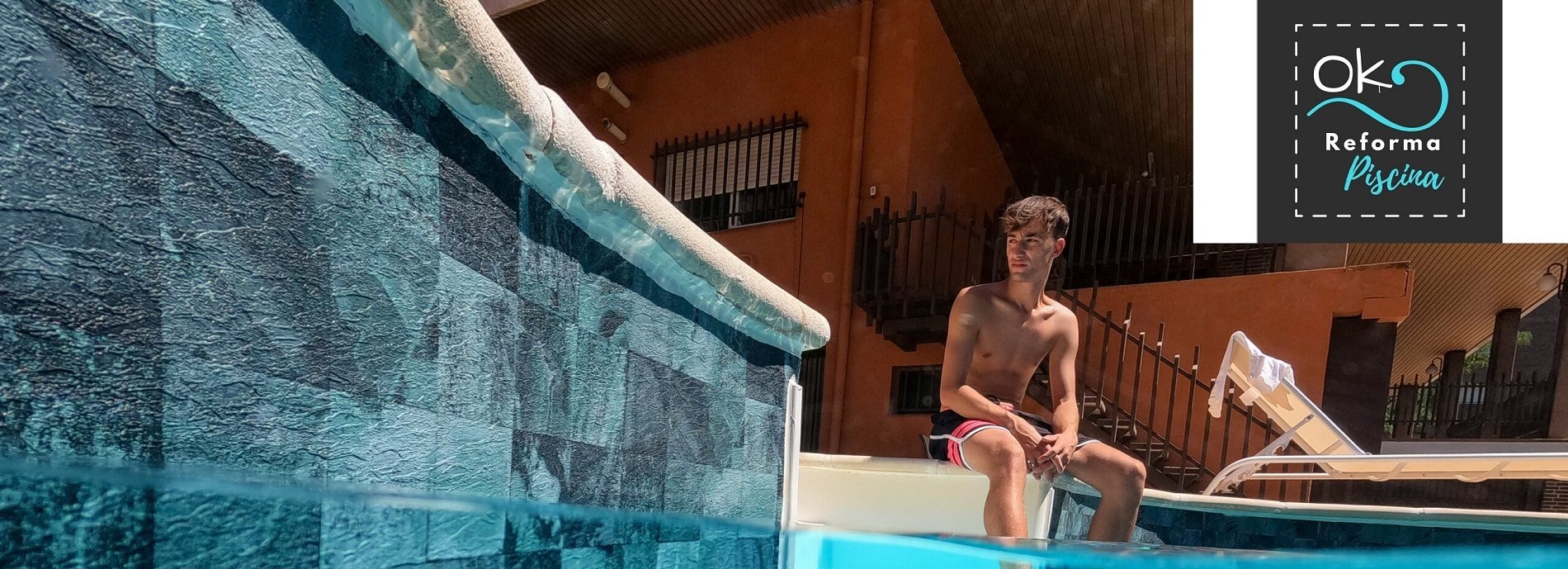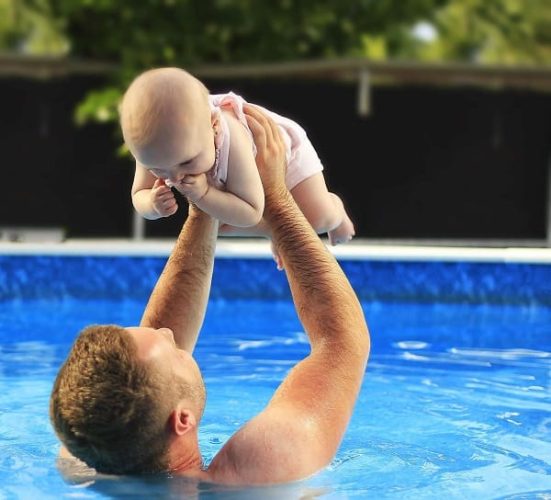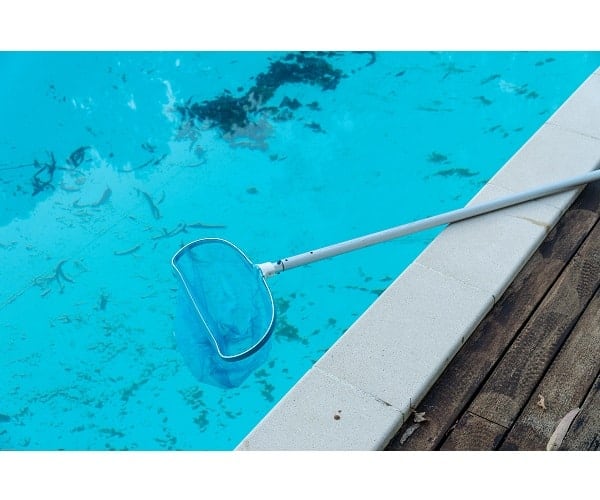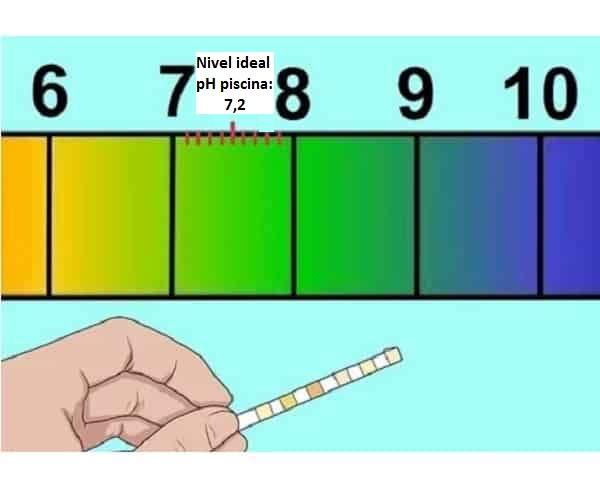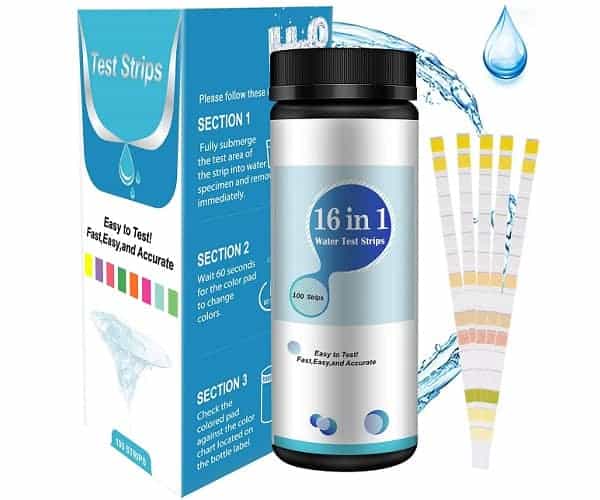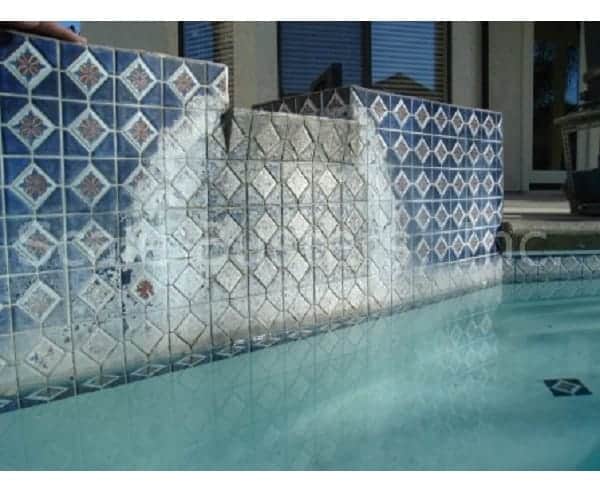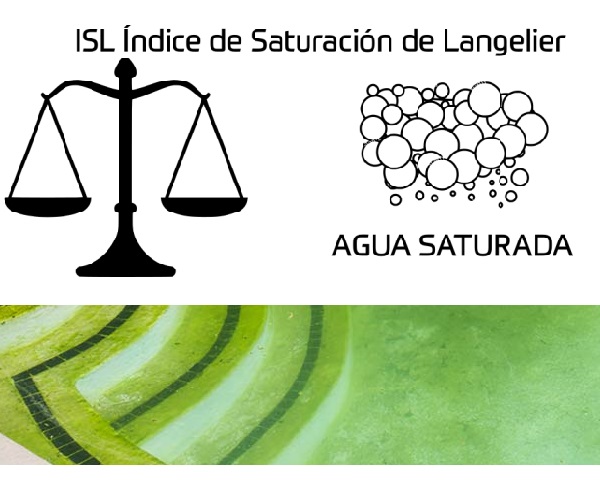
Table of contents of the page
What is the saturation index of pool water?

What is the LSI or Langelier saturation index?

The Langelier saturation index is basically a measure to determine whether water is corrosive (negative LSI) or prone to scaling (positive LSI).
«The pool water saturation index measures the degree of saturation of your pool water with metals and calcium.
The higher value means there are more contaminants in the water and it needs more attention given than usual to cleaning before summer weather ends.
What is the pool saturation index used for?
The Saturation Index is used to determine the optimal water level for a given pool.
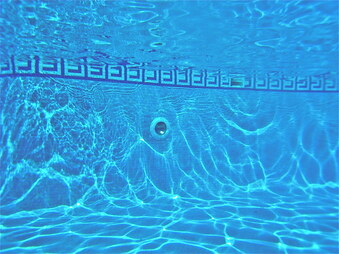
Thus, the ISL works as a base system to balance water and saturation levels. In this video we provide a simple and brief explanation about why it is important to take this value into account in the swimming pool business.
The Langelier saturation index is basically a way to determine if water is corrosive (negative LSI) or prone to scaling (positive LSI).
An LSI value between -0.3 and +0.3 is in an acceptable range, however, the ideal value will always be 0.0.
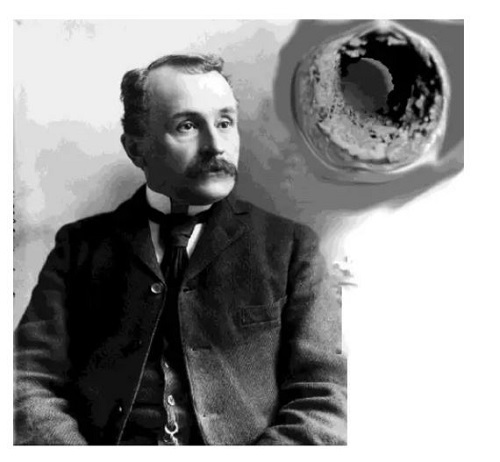
Who discovered Langelier's water saturation index?
It is called the Langelier water saturation index or LSI in some cases, and this test should be done annually to ensure cleanliness.
The Langelier Saturation Index is a formula that was developed from studies conducted by Dr. Wilfred Langelier in the early twentieth century.
Thus, the index is named after Léon Langelier, a Canadian chemist who first described it in the 1950s and remember that it helps evaluate the risk of corrosion and scaling in drinking water sources.
Why is the saturation index of pool water important?
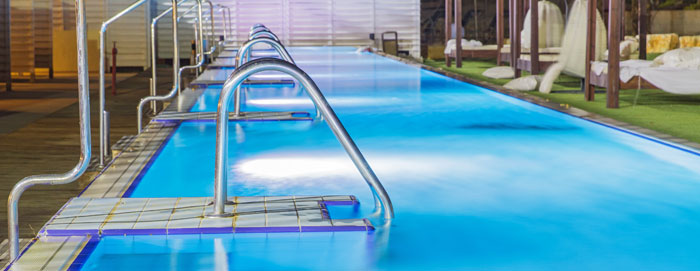
Relevant points in pool water maintenance

The pool water saturation index: essential in the disinfection of pool water
The pool water saturation index (SI) is an important indicator for monitoring the health of your pool water.
The IS is a measure of the amount of water physically dissolved in the pool water. The higher the IS, the greater the amount of water available for bathing enjoyment. However, if the SI is too high, it can cause problems such as algae blooms and foaming in the pool. Therefore, it is important to monitor the IS regularly and take measures to keep it at the optimal level.
Control of the saturation index of the pool water
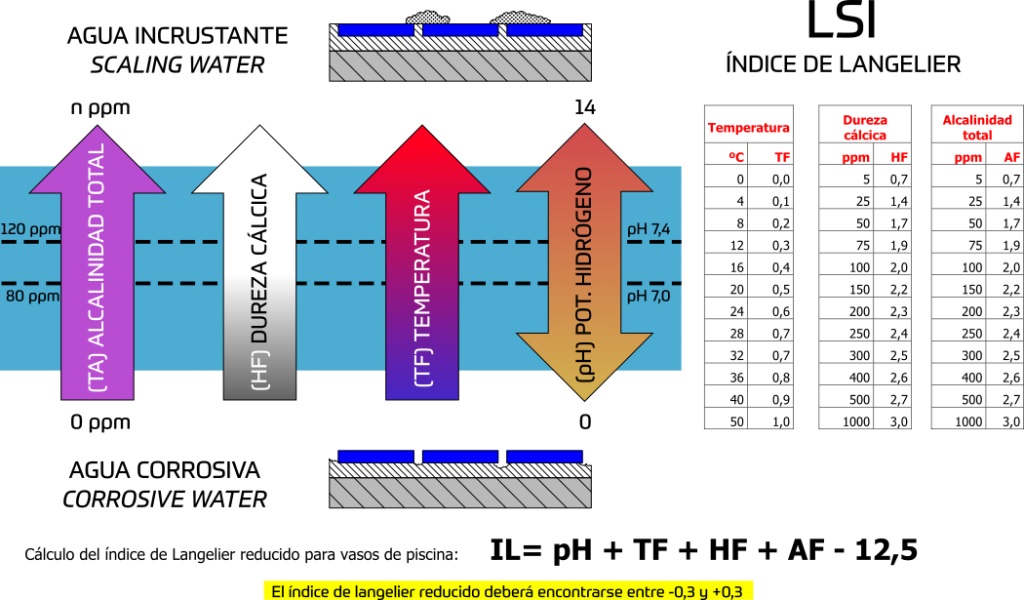
Keeping track of where your pool's LSI is is simply to defend against corrosion and scale.
None of these effects are good for your pool equipment or the people swimming in the pool.
But why should we calculate the Langelier?
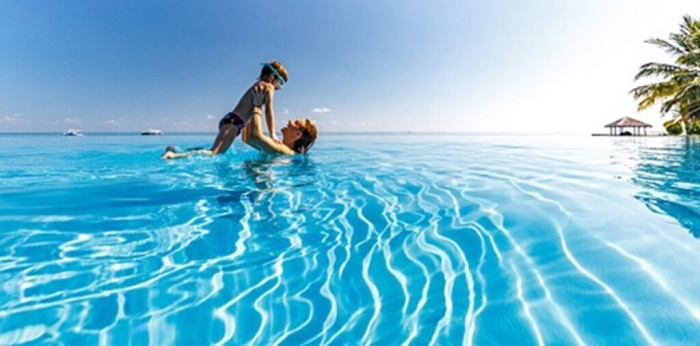
First, for an obvious reason, because we must comply with the legislation and second, for a practical reason, because it will help us to improve both the physical and mechanical condition of our pool and therefore the costs.
The Langelier Saturation index is an index that defines the aggressiveness of water with respect to calcium carbonate (CaCO3) and is based on the effect of pH on the solubility balance of CaCO3. The pH, at which water is saturated with CaCO3, is known as saturation pH (pHs) and depends on temperature, alkalinity, total hardness and total dissolved solids.
The index should not be treated as an exact science, as it is only one component of a much more complex system that determines the optimal pool structure and water level for any location.
Still, knowing the Langeler saturation index is an important skill for anyone working with swimming pools and is necessary to properly design and manage water resources. So, the next time you are planning new water features for your pool or simply checking the overall water quality, keep this formula in mind for the best results.
What is the LSI of swimming pool water?
What does the Langelier saturation index represent in swimming pools?
Health consequences of overcorrecting ISL in swimming pools
Derivations on people by altering ISL indices in swimming pool water
- Unfortunately, overcorrection of the LSI in swimming pools is a potentially dangerous situation that should be avoided at all costs. ISL, or adding salt to water, is a common practice in many homes.
- In some cases, ISL can be safely used as a disinfectant, killing harmful germs and removing waste from water. However, LSI can also be used incorrectly, resulting in excess LSI.
- When this occurs, too much LSI is added and the water becomes too salty for humans and pets to drink safely.
- Ultimately, overcorrecting the LSI can have serious consequences, including dehydration, cramps, and even death.
- Apart from the considerable consequences on people in the decompensation of the saturation of the pool, Below on this page we will tell you the consequences of the ISL imbalance in the pool itself.
Correct parameters in pool water disinfection
TTable of ideal values for disinfecting pool water
Parameters with the ideal indices for disinfecting pool water
| PARAMETER | IDEAL VALUE pool water |
|---|---|
| pH | pH level: 7,2-7,4. (related posts: how to increase pool pH y how to lower pH pool). |
| Residual free chlorine | Total chlorine value: 1,5ppm. Free chlorine value: 1,0-2,0ppm Residual or combined chlorine: 0-0,2ppm |
| total bromine | Total bromine: ≤4 ppm (swimming pools) ≤6 ppm (spas) Combined bromine: ≤0,2 ppm |
| isocyanuric acid | Cyanuric acid: 0-75ppm |
| calcium hardness | Pool water hardness: 150-250ppm |
| Alkalinity | Alkalinity of pool water 125-150ppm |
| REDOX Potential | Ideal pool ORP value (pool redox): 650mv -750mv. |
| Turbidity | Pool turbidity (-1.0), |
| Transparency | Let the drain be distinguished |
| Temperature | Ideal temperature: Between 24 – 30 ºC |
| Phosphates | Pool phosphates (-100 ppb) |
| Sal Island | Between 3000 and 6000 mg/l |
| RH | ≤65 % |
| Carbon dioxide | ≤500 mg/m3 |
| Pool saturation level | An LSI value between -0,3 and 0,3 is considered to be in an acceptable range. The ideal value, however, is between 0,20 and 0,30. |
Automate the pool
Indeed, the priority, as you already know, is pool water.
For this reason, it is clear that the best suggestion to breathe calmly is to invest in automating the pool In addition, in the long run it will not only give us peace of mind but the investment itself will be reimbursed in the form of savings in chemical products, savings in swimming pool water...
Therefore, transfer the responsibility of the pool to the devices, forget about disinfecting pools and take advantage of the bathing time that is already short enough... And in reality, it is the reason why you have a pool.
Possible values in the Langelier saturation index

Ideal value of the Langelier Saturation Index (LSI)

The Langelier Saturation Index (LSI) is defined equal to the difference between the measured value of the pH of the water and the saturation pH:
The water saturation index scale ranges from -1 to +1. Ideally, your pool's water saturation will be between -0.3 and +0.3. However, the goal is to obtain a perfectly balanced 0 (known as balance) and maintain that number to avoid corrosion and scaling.
In this way, Langelier defines an index (LSI) equal to the difference between the measured value of the pH of the water and that of the saturation pH:
The Langelier Saturation Index (LSI): LSI = pH – pHs. However, the index is used to determine whether water is considered corrosive or prone to scaling.
What do we mean by the Langelier corrosive water saturation index?

The key word is saturation, an ideal saturation level in the LSI is 0.0. Water seeks to be in balance naturally, and will find a way to get there.
- An insufficient saturation level is corrosive, while supersaturated water will form scale.
- Water has a limit to the level of calcium it can maintain in suspension, once the water is at the correct saturation level, problems will no longer exist.
- In this case, our task as pool maintenance professionals is to balance the water properly (as well as maintain said balance) so that neither scale nor corrosive water is produced that will cause damage to the pool walls.
Langelier Saturation Index Value
| Langelier Saturation Index Value | water trend |
| +0.3 to +2.0 | High inlay. |
| 0.0 to +0.3 | Light scaling with corrosion. |
| 0.0 | Balanced. Light corrosion may occur. |
| 0.0 to -0.3 | Light corrosion. No scale formation. |
| -0.3 to -2.0 | High corrosion. |
- What is the saturation index of pool water?
- Why is the saturation index of pool water important?
- Correct parameters in pool water disinfection
- Possible values in the Langelier saturation index
- Ideal values in the saturation index of pool water
- Corrosive pool water = saturation index less than 0
- How to reduce and prevent the corrosive tendency of pool water
- Fouling pool water = saturation index greater than 0,30
- Prevention of scale in the pool
- Factors Affecting LSI of Pool Water
- How to calculate ISL pool water
- How to correct saturation level of pool water
- Best meters for pool water control
Ideal values in the saturation index of pool water

If LSI=0, the water is saturated (in equilibrium) with CaCO3 and it neither precipitates nor dissolves.

- An LSI value between -0,3 and 0,3 is considered to be in an acceptable range.: An LSI between -0,3 and 0,3 indicates that the water is susceptible to corroding pipes and installations.
- The ideal value, however, is between 0,20 and 0,30.
With different water levels, the Langelier Saturation Index will be different and will vary depending on local conditions.
For example, a high Saturation Index value may be necessary for a crowded public pool with high user traffic, while a lower index may be necessary for a private backyard pool that is used primarily by members. of the family.
Corrosive pool water = saturation index less than 0
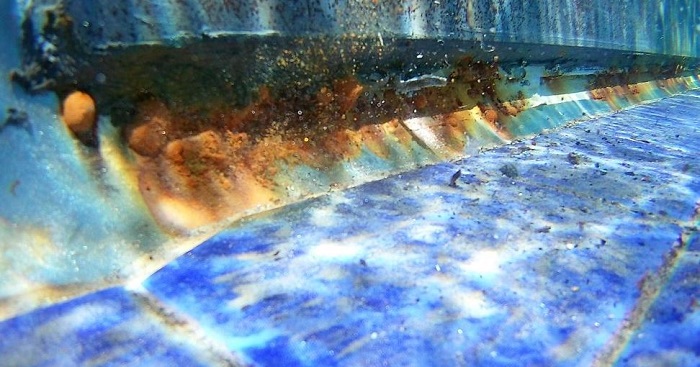
If the pool saturation index values are negative, then it is corrosion.
Limescale and corrosion can be a serious problem for your pool, not only because it makes it look dull and dull, but also because it can affect the health of your guests.
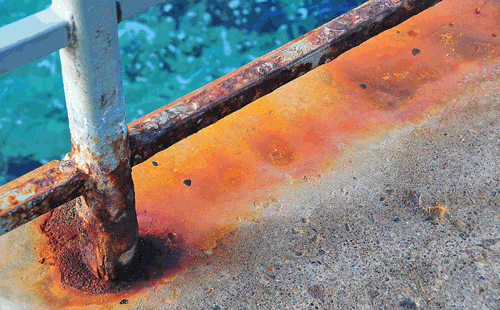
What does the pool saturation index mean in negative value?
If the saturation index of the pool is negative: it indicates that the water is corrosive since the water is supersaturated and therefore CaCO3 is deposited and therefore the water is corrosive.
As a reminder, unsaturated water has the tendency to eliminate sheets of calcium carbonate (CaCO3) present that protect pipes and equipment.

Indications for the LSI of corrosive pool water
Type of corrosion according to ISL value of the corrosive pool
- LSI value: 2,0
- ISL value 0,5
The lower the value of any of the previous three, the less encrusting (or more corrosive) the water becomes, that is, an insufficient saturation level of calcium carbonate in the water is corrosive and tells us when the water is aggressive.
Low LSI levels are not only a sign of negligence on the part of the pool owner, but also a threat to your pool equipment.
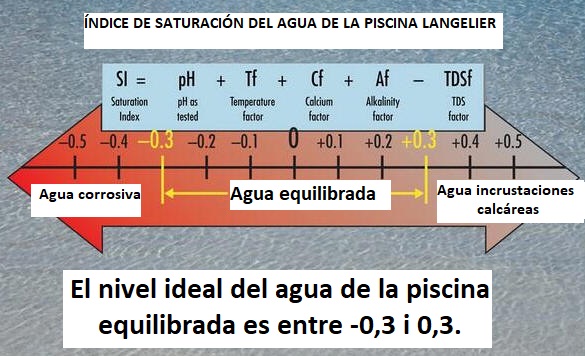
While all types of metals are highly reactive, bronze in particular is notoriously toxic to pipes.
Corrosion will begin to break down the pool equipment as well as the walls of the pool.
- Any fixtures, pipes, vinyl siding or plaster will begin to break down and become unusable.
- If the water is corrosive enough to start affecting pool equipment, you don't want it on your skin.
- If left unchecked, ISL levels can grow to dangerous levels, causing stress corrosion in pipes, destroying faucets, sprinkler heads, gaskets and skimmer baskets.
How to reduce and prevent the corrosive tendency of pool water
It should be noted that there are 3 possible methods to reduce the corrosive tendency of pool water and they are by increasing 3 parameters: pH, alkalinity and calcium hardness..
1st way: Reduce the corrosive tendency of water: increasing the pH
The pH is increased by adding a hydroxide (such as soda or potash).
Buy pH increaser
2nd way: Reduce the corrosive tendency of water: increasing the alkalinity
- Alkalinity is increased by adding to the water a carbonate (such as Calcite, which is calcium carbonate), a bicarbonate or a hydroxide (such as Corosex, which is magnesium oxide, which upon contact with water hydrolyzes and dissolves as Mg+2 ion and OH– ion).
Buy pool alkalinity increaser
3rd way: Reduce the corrosive tendency of water: increasing calcium hardness
- Hardness is increased by adding it to water (such as through Calcite or Corosex).
Buy pool calcium hardness increaser
Prevention of metal stains and pool scale
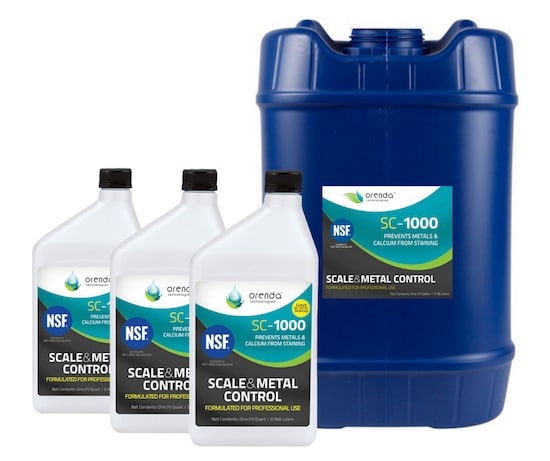
About SC-1000 is a non-phosphate based metal chelator
- First of all, highlight that the SC-1000 metal chelating product is essential to have a chelating product, however, most of the chelating products on the market are phosphate-based.
What is metal chelating SC-1000 for pool care?
- SC-1000 is a common product used in pool care to help condition the pool surface and prevent cracking or flaking during the drying process.
- As the name suggests, this product is primarily used to condition the water itself, bringing minerals and metals back into solution so they can be easily purged when the pool is finally ready to be opened.
- This helps prevent damage to the pool surface during the drying process and ensures that it remains in its optimal condition even after you have filled it with water.
- However, SC-1000 can also have a positive impact on bathers' experience in the pool, keeping it soft and comfortable for longer.
- Overall, this versatile product is a great addition to any pool care program and is worth considering if you want to help your facility remain protected and functional even after the pool has been filled.
Stabilizes the LSI with the preventive of lower levels in the saturation index of the pool water
- Additionally, SC-1000 reduces ISL ions by chelating them with a safe acidic pH mixture; Without the restrictions of LSI levels, heavy metals such as copper, iron and zinc can easily corrode essential pool components.
- Simply adjust the ISL levels in your pool to protect your investment, and enjoy the clean, smooth lines of a truly ISL-free pool.
How to use the pool metal stain and scale prevention product
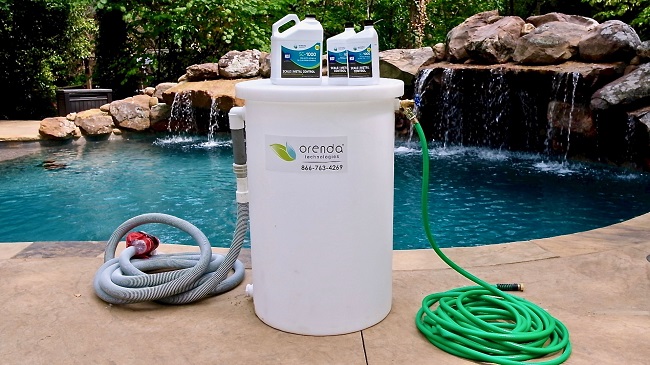
Metal stain and scale prevention: SC-1000 is Orenda's metal chelator that is not designed based on phosphates.
Actually, we think that it is essential to have a chelating product, however, the majority of chelating products that exist on the market are composed of phosphates while SC-1000 is not.
Use the metal chelator for swimming pools
- SC-1000 is primarily used in conditioning processes, to protect the pool surface while the surface finishes drying.
- Well, it works by attracting minerals and metals back to the solution. It also helps remove stains and scale that are already in the pool.
- From another perspective, remember that when using SC-1000 it may affect lpurge dose chlorine levels, so it is important to constantly monitor chlorine levels until they level out.
Video application product prevention of corrosive pool water
Buy corrosive pool water prevention product
Product price avoid consequences of saturation index less than 0
- What is the saturation index of pool water?
- Why is the saturation index of pool water important?
- Correct parameters in pool water disinfection
- Possible values in the Langelier saturation index
- Ideal values in the saturation index of pool water
- Corrosive pool water = saturation index less than 0
- How to reduce and prevent the corrosive tendency of pool water
- Fouling pool water = saturation index greater than 0,30
- Prevention of scale in the pool
- Factors Affecting LSI of Pool Water
- How to calculate ISL pool water
- How to correct saturation level of pool water
- Best meters for pool water control
Fouling pool water = saturation index greater than 0,30

An LSI greater than 0,30 suggests that water can also cause scaling problems.

If the saturation index of the pool is positive: it indicates that the water is fouling
If the index is positive: indicates that the water is fouling. Supersaturated water with respect to calcium carbonate (CaCO3). Possible scale formation.
Type of corrosion according to ISL value of the encrusting pool

Fouling Pool Water Levels
- ISL value for swimming pools: 0,0
- ISL value for swimming pools: 0,5
Problems derived from an incorrect saturation index of the pool water
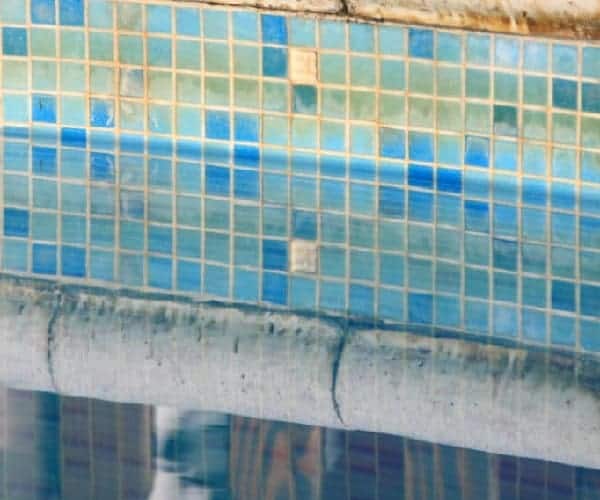
If the water is aggressive (LSI<0), corrosion can occur on the metal parts and can also damage the seals. Even if our pool does not have metal parts, this imbalance will cause problems.
- Mostly, the effect that we all know and that is clearest, if the water is fouling (LSI>0), salt deposits will appear on filters, walls, pipes, etc. because water is not corrosive and the films of limestone salts deposited additionally protect against corrosion.
- Hence, As the LSI <0, the water tends to balance by taking the missing calcium from where it exists, dissolving old scale or directly from the components.
- Above all, it is unsightly on visible surfaces and in pipes it reduces its effective section and can cause total obstruction.
- In the pool, the walls and floor become whitened with the deposition of calcium salts mixed with organic products and metal oxides, giving the pool an unsightly and premature aging appearance.
- Additionally, scale will begin to build up and clog your pool's ventilation systems and pipes.
- These calcium deposits are incredibly difficult to remove, so preventing them is a better alternative than repairing them.
- El pool water will also become cloudy and it will be difficult to see through it.
- Scale, if present, dissolves, leaving metal surfaces even more exposed to corrosion.
- In tile pools, the joints tend to wear out and their adhesion weakens, making them easier to detach. This occurs basically due to what we indicated at the beginning of this post, due to the solubility balance of CaCO3.
- Finally, comment that the water in the pool wants to be in balance, and scale and corrosion are its way of trying to fix the balance. If you don't have enough calcium and minerals, you start consuming what you can to get it. If you have too much, it will start to settle in places like pipes or on the walls of the pool.
Prevention of scale in the pool
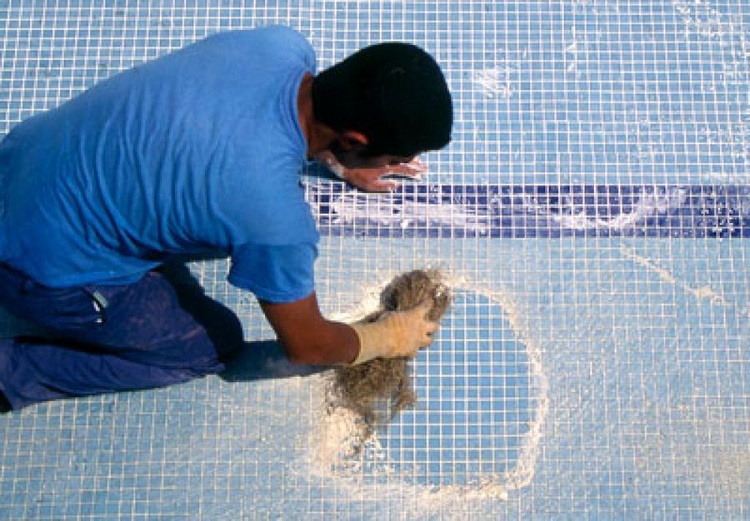
Control of lime in the pool

To prevent these problems from arising, you need to keep an eye on your water balance and make sure it stays in the proper range.
You should also perform regular filter maintenance and preventative maintenance programs, as they can help keep your water in tip-top shape.
Of course, it's also important to clean and descale areas where most damage occurs, such as PVC piping systems or pool walls. In general, taking a proactive approach to managing limescale and corrosion
Generally speaking, to prevent and control scale, you must first understand the unique factors that contribute to these problems.
The first three underlying factors are hardness, acidity and salt.
- Firstly, Hardness refers to the overall level of calcium and other minerals in the pool water. Thus, hard water has a high LSI and develops limescale more easily than soft water.
- Secondly, Acidity is the pH of the pool water. A higher pH can create more corrosive conditions, making it difficult for calcium to adhere to your pool's ceramic surfaces.
- Lastly, The salt level is also crucial. When salt is added to a pool, it creates an environment where calcium has a harder time sticking. Therefore, achieving the right balance of hardness, acidity and salt is essential to prevent scale formation.
Strategy to stabilize the LSI
If we change our strategy and stop chasing a constantly changing value (pH) and focus on balancing the LSI, the calcium value will be one of the main ones. Calcium may not buffer pH directly, but it certainly stabilizes overall LSI.
When our pH changes, so does the value of calcium.
If we increase the available calcium, it will help balance the change in pH, returning things to normal.
Factors Affecting LSI of Pool Water
Importance of influential agents in the LSI value of swimming pools
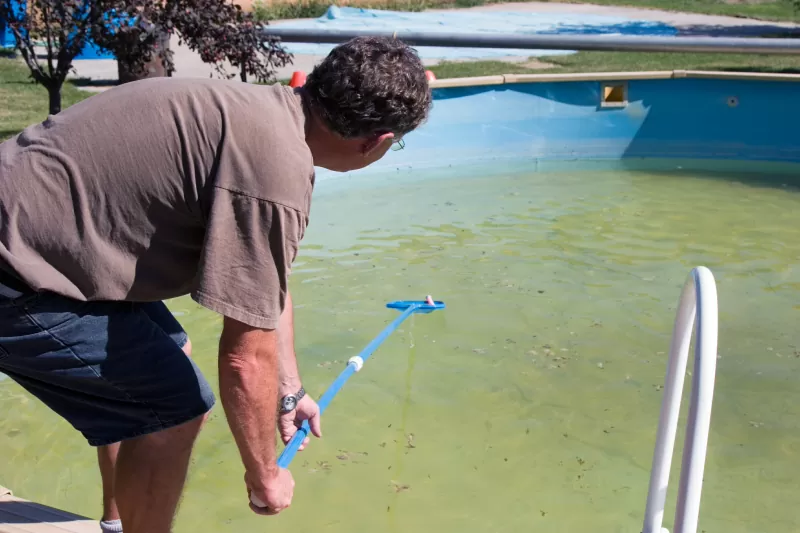
All components of the ISL are important
Maintaining the saturation level of your pool
This should have answered everything you need to know to determine the saturation level of your pool and how to fix it if necessary. Just remember that any adjustments you make to the pool chemistry should be in small doses, so you don't risk overcorrecting.
The easiest way to maintain your pool is to keep on top of it constantly and not let problems become calcified pipes or corroded equipment. Testing a couple of times a week will quickly show whether you need to take corrective action or not.
Factors Affecting LSI of Pool Water
Essentially, the factors that affect the saturation level of the pool are (if you click on the links you will directly access the entries where we present all the details):

- Temperature
- pH
- Hardness
- isocyanuric acid
- Alkalinity
- Amount of Total Dissolved Solids (ppm)
Next, we develop each of them.
1st essential factor to calculate the Langelier Saturation Index
The essential temperature to calculate the Langelier Saturation Index
Temperature affects how efficiently pool chemicals work, as well as the speed of certain reactions in the water.
- Another parameter that enhances the tendency of water is its temperature: at higher temperatures, the tendency increases, because the viscosity decreases and the mobility of the ions (with their respective electrons) increases.
- Consequently, the temperature of a pool can have a profound impact on its health and functioning.
- Normally, increasing the temperature of a pool leads to an increase in the activity of gases and certain chemical reactions within the water.
- This makes it more likely that a pool will have algae problems or other problems as a result of changing conditions.
- On the other hand, decreasing the temperature of a pool can cause it to freeze, which is problematic for keeping it clear and clean.
- Therefore, it is important to maintain a proper temperature for your pool to ensure optimal performance and health of both the pump and pool materials.

What is the ideal pool temperature?
La ideal pool temperature It depends on factors such as your location, Its characteristics and the use given to it. An outdoor pool is not the same as an indoor pool, nor is it the same whether it is intended for bathing or swimming.
El outside weather It is also a determining factor to establish the ideal temperature of the water and, although there is no exact numerical measurement to set that value, we can affirm that the water temperature in outdoor pools usually oscillates between the 28 and the 30 degrees.
In the case of indoor pools, the temperature is associated with the degree of humidity of the environment. The higher the humidity, the lower the temperature of the water. As a general rule, in indoor pools the temperature varies between 24 and 29 degrees.
2nd Causes of an erroneous value in the pool water saturation index
Maintain pH within its ranges
pH levels are an important factor in maintaining the pH balance of your pool.
- Your pool's pH level should be kept in a comfortable range to avoid problems such as corrosion and scale formation. Factors such as pH levels affect the effectiveness of your pool chemicals and can affect your health and safety. Therefore, it is important to consider both the pH levels and disinfection levels of your pool to keep it clean and safe.
- Furthermore, there is a very determining relationship between high pH in swimming pools due to overcorrection of the ISL
Optimum pH value for pool water
- The optimal pH for pool water is 7.2-7,4, as it is the same as the pH in human eyes and mucous membranes. A pH of 7.4 also provides good chlorine disinfection, so between 7,2 and 7,4 the pH can be considered balanced.
How does it happen that by modifying LSI we increase the pH of the pool water?
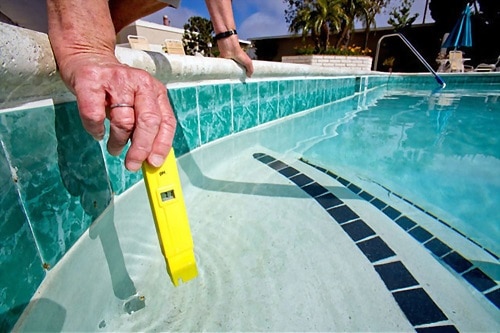
- In other words, when the pH or alkalinity drops so that the LSI drops too far below 0,00, the water must be recovered and rebalanced. For example, if you add too much acid, you may notice the next day that the pH is higher than it was in the first place.
- This may happen because your acid dump could have lowered the alkalinity and pH, causing the LSI to become aggressive (below -0.30), causing the water to seek calcium saturation.
- The water etches the cement into the surface (or tile grout), which has a high pH, and its calcium hardness also increases. This is especially true if you add acid incorrectly.
- Really, all the water is trying to do is return to LSI equilibrium. Your acid spills disturbed the peace. A perfect example is the start of a new pool.
3st essential factor to calculate the Langelier Saturation Index
Test alkalinity to know the saturation of the pool
Alkalinity is a measure of the acidity or basicity of a liquid. Alkalinity is used to measure the pH of water in swimming pools.
- Alkalinity is usually expressed in parts per million (ppm), but decimal equivalents are used in some countries.
- Alkalinity is important because it determines the amount of acid or base that is generated when a pool is used.
- If the alkalinity is too high, the pH of the water will increase and it will be less safe for bathers.
- If the alkalinity is too low, the pH of the water will drop and it will become more corrosive, potentially causing damage to pool equipment and personal injury.
- Alkalinity is usually tested with a buffer solution of 0,02 pH units, which allows the measurement to be performed without causing a change in pH.
Recommended pool alkalinity level
Pool alkalinity recommended is between 125-150 ppm.
4º Causes of an erroneous value in the saturation index of the pool water
Test the calcium hardness of the pool
Calcium hardness directly indicates the amount of calcium hidden in the water.
- Having a high amount does not necessarily mean that scale will occur, since these depend largely on pH levels. The ideal calcium hardness should be close to 150 ppm, otherwise you risk having harder water and greater potential for scale.
Correct pool hardness values
Ideal LINER pool water hardness value: between 175 and 225 ppm per million.
Pool hardness value range with coatings other than liners 180 to 275 ppm.
5th essential factor to calculate the Langelier Saturation Index
Amount of isocyanuric acid
What is cyanuric acid (CYA)?
Isocyanuric acid: what is it and what is it for in our pool?
In the pool industry, cyanuric acid is known as a chlorine stabilizer or pool conditioner.
First of all, the pool cyanuric acid stabilizer limits the decomposition of chlorine by the sun's ultraviolet rays, preventing it from being absorbed too quickly and the pool water from running out of disinfectant..
Ideal value cyanuric acid (chloramines)
- The optimal concentration of cyanuric acid in swimming pools is between 30 and 50 ppm. Although, the World Health Organization suggests that cyanuric acid levels in swimming pools do not exceed 100 ppm. In Spain, the recommendation that cyanuric acid in swimming pools be less than 742 ppm has been agreed upon with Royal Decree 2013/75..
6nd Causes of an erroneous value in the pool water saturation index
Amount of Total Dissolved Solids (ppm)
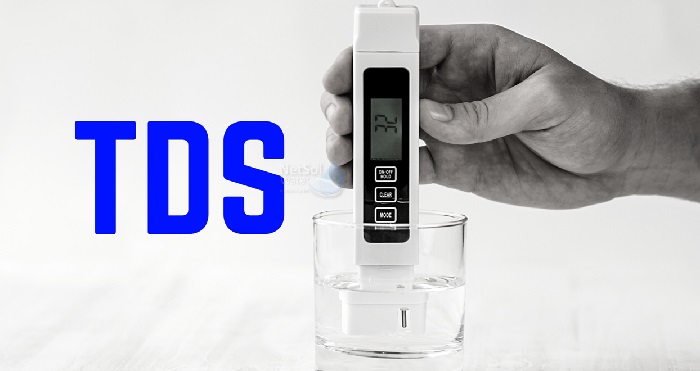
TDS is a critical measurement for any pool owner.

- Initially, clarify that total dissolved solids do not influence the scaling or corrosive tendency of water, but they do enhance this tendency, because they increase the conductivity of water.
- It can help determine the health of your pool and identify potential problems early, and in fact, based on the TDS test results, you may need to make adjustments to your pool water, such as increasing the amount of calcium or add a chemical activator to start algae growth.
- The correct balance of TDS is important, as too high a TDS can lead to water quality problems such as scale formation and algae blooms.
Inaccurate TDS measurements can also be a source of frustration and can negatively impact pool performance and maintenance costs over time.
Therefore, it is necessary for pool owners to pay close attention to their TDS readings and have them performed regularly by qualified professionals.
Standard level tds pool water
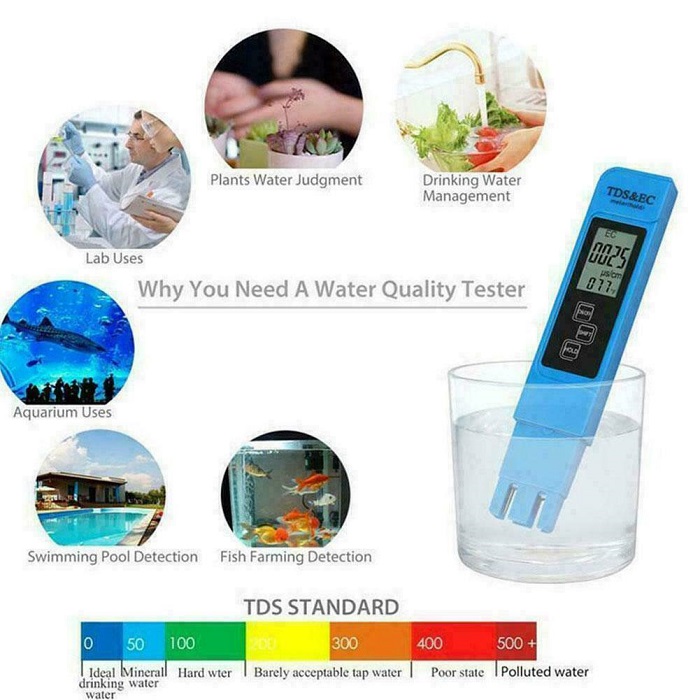
TDS stands for total dissolved solids and refers to the total amount of minerals and salts dissolved in water. TDS levels are usually expressed in milligrams per liter (mg/L).
- The typical value for purified water is about 4,0 mg/L, and less than 3,0 mg/L can be considered dangerously high. In a study carried out by the WHO, the following conclusions were reached about the ideal level of TDS in water (mg/l): Less than 300: Excellent. 300 – 600: Good. 600 – 900: Regular. > 900: Dangerous.
- TDS levels greater than 900 mg/L may be an indicator of excessive use of irrigation water or high levels of mineral content in the source water. People with high levels of TDS may experience irritation, headaches, and other symptoms.
- What is the saturation index of pool water?
- Why is the saturation index of pool water important?
- Correct parameters in pool water disinfection
- Possible values in the Langelier saturation index
- Ideal values in the saturation index of pool water
- Corrosive pool water = saturation index less than 0
- How to reduce and prevent the corrosive tendency of pool water
- Fouling pool water = saturation index greater than 0,30
- Prevention of scale in the pool
- Factors Affecting LSI of Pool Water
- How to calculate ISL pool water
- How to correct saturation level of pool water
- Best meters for pool water control
How to calculate ISL pool water
How to calculate the ISL and saturation level of pool water
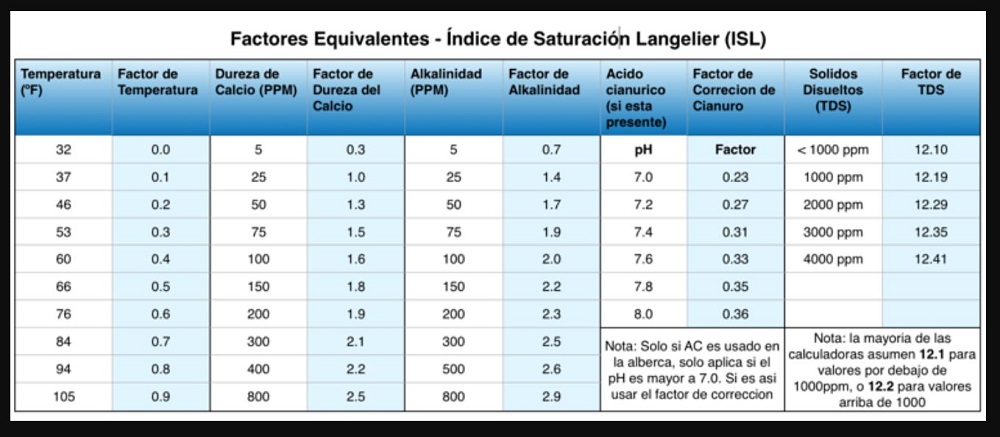
After just reviewing the six essential factors to calculate the Langelier Saturation Index
- pH
- Temperature
- Pool hardness
- Alkalinity (ppm)
- Isocyanuric acid/Stabilizer (when applied)
- Total Dissolved Solids (ppm)
To calculate your LSI, you'll have to do a little math. You will first need to find out the temperature, pH, alkalinity, calcium hardness, cyanuric acid, and total dissolved solids of your pool.
And, we inform you that each of these variables is assigned with a correction factor, depending on its value when calculating the ISL, as shown in the following table.
The Equation to calculate the LSI of pool water

Formula for pool water saturation index
(pH) + (temperature in Fahrenheit) + (calcium hardness) + [(total alkalinity) – (CYA correction factor at current pH)] – (TDS) = LSI.
How to correct saturation level of pool water

When to rectify the saturation level of the pool
When to adjust the Langelier saturation index for pool water
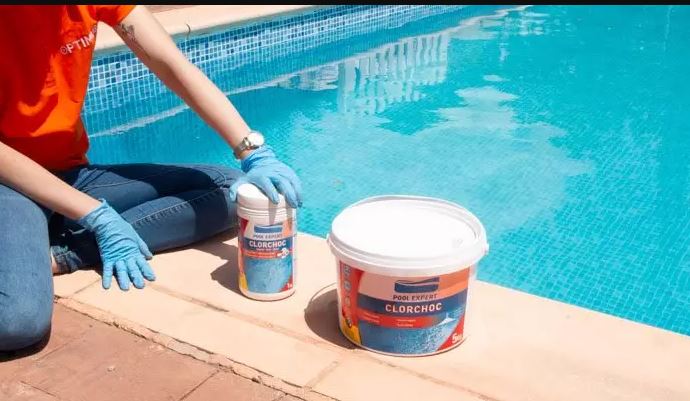
El Langelier index It allows knowing the quality of the water by providing information on the encrusting or aggressive nature of the water and is based on balances of carbon dioxide, bicarbonate-carbonates, pH, temperature, calcium concentration and total salinity in the water.
It is a fundamental parameter to determine corrosion or incrustation in water distribution networks and indoor industrial and domestic installations.
As we have already mentioned, in the case of pools The optimal Langelier Index should be between -0,3 and 0,3, so when it is not within this range we will have to agree on the value.
Recall of: Ideal value of the Langelier Saturation Index (LSI).

LSI pool formula
Fundamentally, the index is used to determine whether water is considered corrosive or prone to scale formation. This way, Langelier defines an index (LSI) equal to the difference between the measured value of the pH of the water and that of the saturation pH: LSI = pH – pHs
Acceptable range in LSI pool:
- An LSI value between -0,3 and 0,3 is considered to be in an acceptable range..
- However, the ideal pool ISL range is between 0,20 and 0,30.
Pool LSI Adjustment

How to use the pool saturation level index calculation table
We must move the arrow on the slider bar to the left or right to select the value. After putting the respective bars in the position of the value obtained for each parameter, we will obtain the solution below
We must look at the tables below to know which constant each value obtained corresponds to.
If we look at the table of values, we will notice that calcium hardness and total alkalinity have a similar impact on the LSI.
This is important because it means that the Total alkalinity is not the only one with the power to stabilize pH. Calcium hardness can also stabilize pH.
ISL Pool Correction Example
Next, we put a specimen of a pool with the following chemistry:
- pH: (7.4)
- Temperature: 84ºF (0.7)
- Calcium hardness: 300 (2.1)
- Alkalinity: 100 (2.0)
- Isocyanuric acid/Stabilizer: (The pH is 7.4 = 0.31)
- Total Dissolved Solids < 1000 (12.1)
After measuring the values, we make the calculation to correct the saturation level of the pool
- (7.4) + (0.7) + (2.1) + [(2.0)-(0.31)] – (12.1) = ISL
- [(10.2) + (1.69)] – (12.1) = ISL
- [11.89] – (12.1) = -0.21 ISL
Best meters for pool water control
What are photometers for swimming pools?
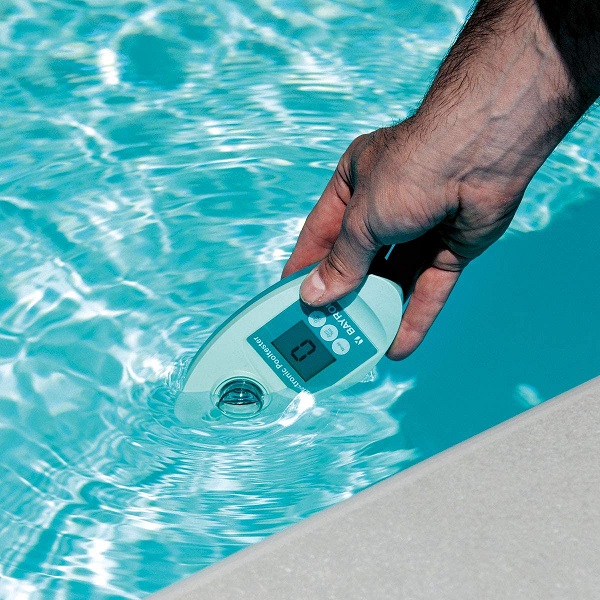
Photometers for swimming pools: pool water control equipment
- Pool photometers are useful tools for monitoring the health of your pool.
- They provide a single reading that shows the levels of chemicals, such as chlorine or bromine, as well as the amount of sunlight that has hit the pool.
- If used correctly, they can help keep your pool clean and in good condition.
- However, like all consumer products, pool photometers have their own difficulties. Some models may be unnecessarily expensive, while others may inaccurately measure the amount of sunlight in your garden. Q
- Of course, the best way to choose a pool photometer is to do your research and consult with a professional before making the purchase. This way you can ensure you get the most accurate results possible and get the most bang for your buck.
Photometer benefits for swimming pools

If you are planning to build a pool or are already thinking about installing one in your yard, it may be important to have a light meter to make sure
- Basically, a pool photometer is a device that measures water temperature and pH levels and reports the results directly to your smartphone or tablet.
- This information can help you evaluate the health of your pool, track water quality over time, and avoid costly repairs in the future.
- With proper monitoring, it is possible to keep your pool safe and functional for many years. So why not invest in a reliable pool photometer today?

Technical characteristics pool photometer
Pool photometer specification
- The most important parameters of the pool
For private pool owners who attach importance to obtaining the most accurate measurement results for important parameters such as chlorine or pH, the Scuba II is the ideal test instrument. The instrument works intuitively and measures the most important pool parameters: free chlorine, total chlorine, bromine, pH value, M alkalinity and cyanuric acid. - Water tight
What if the instrument falls into the water? No problem: the Scuba II is not only waterproof, it also floats. - Integrated measurement chamber
Take a test by submerging the instrument's measurement chamber. - Quick results
Add a reagent and press the “Test” key. You will get the result in a few seconds. Or in other words: measure like the professionals.
How to use the pool photometer
The pool photometer is a great tool for monitoring the effectiveness of your pool.
This device measures the amount of light that is reflected from the water surface and can help determine if your pool is properly maintaining the chemical balance of the water.
- The light meter usually comes with a set of instructions to guide you in its use, but here are some tips that can help you maximize its potential:
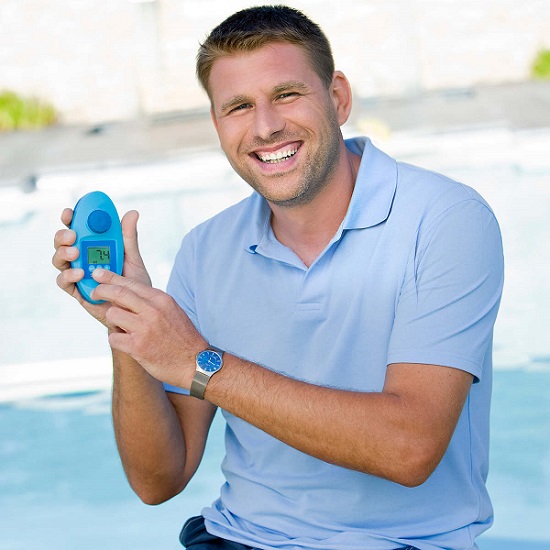
Steps to use photometer for swimming pools
- Initially, you need to take a baseline reading before adding new chemicals or treatments to the pool. This will help you get an accurate picture of the pool's current performance, and allow you to make any necessary adjustments before taking any further action.
- Next, evaluate the water chemical levels regularly to see if any changes need to be made.
- Or maybe, if you notice that the pool is constantly producing high levels of green algae, or if your pH level is constantly low, it may be time to make some adjustments to your water chemistry. Once you have identified any potential problems, then it is simply a matter of taking additional steps to determine exactly what needs to be done to remedy the situation.
With proper use, the pool photometer can play an invaluable role in helping homeowners maintain their own pools for years to come.
RECOMMENDED: scuba ii photometer
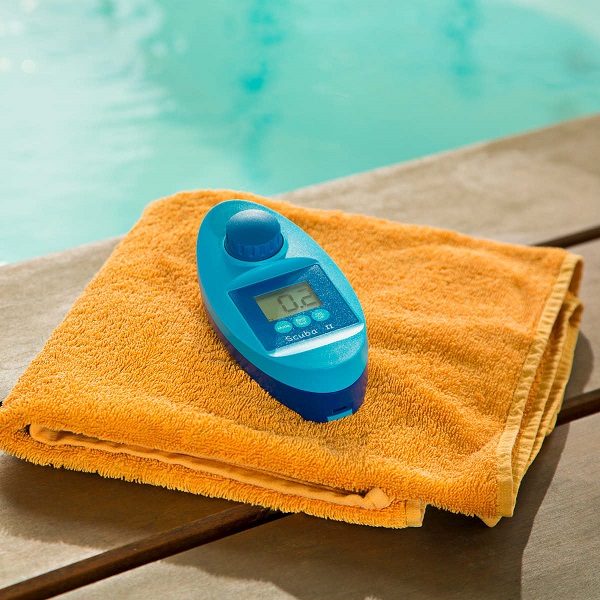
Best pool water photometer: scuba ii photometer
Who needs a fancy pool photometer? To begin with, anyone who keeps track of important parameters of The pool needs a reliable and accurate way to measure water clarity, temperature and chemical levels.
But beyond this, the Scuba II photometer is a complete game changer when it comes to understanding how your pool works.
- It emits infrared light, allowing you to see invisible objects underwater that other scopes cannot.
- Thanks to this revolutionary feature, you'll be able to dive into your own backyard and learn all kinds of new things about your pool, things you never thought were possible.
- So if you want to get the most out of your pool this summer, consider investing in a Scuba II today. You will not regret.
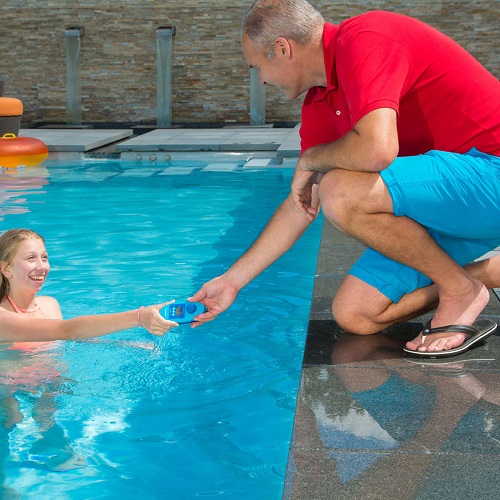
How to use scuba ii photometer
TDS compensation ratio
- The TDS value is determined by multiplying a conductivity reading by a known ratio factor.
- The meter allows you to select a conversion rate in the range of 0.40 to 1.00. The ratio varies with the application, but is typically set between 0.50 and 0.70.
- Note: The stored ratio will appear briefly on the lower temperature display when the meter is turned on for the first time or when you change the measurement function to TDS.
- Note: In salinity mode, the ratio is 0.40 to 0.60 automatic.
- To change the ratio, while in TDS (ppm or mg/l) measurement mode:
